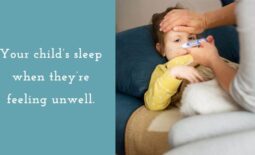Pre-term babies and sleep: at home
When you take your pre-term baby home from the hospital, you are taking a journey that is almost certain to be a lot later than most other parents. You are also taking a slightly different path from those parents of full term babies; pre-term babies often require special attention and have additional needs that most parents do not ever need to worry about. Hopefully your medical team has you well prepared, and you are clear on exactly how you are to care for your baby once you are home. But what about sleep? We’ve put together a brief guide to help you make your way through the early days at home:

- Take each day as it comes. The first time you step out of the hospital with your baby, you will no doubt feel a mixture of emotions. Away from the security of the medical team you may feel extra vulnerable, and that is quite normal. If your medical team believes that you and your baby are ready for discharge, then you will be fine. Don’t try to do too much at once and take some time to get to know your baby in the privacy of your own home. You may have a medical plan in place for your return, or you may not. Each baby is different and your medical team will advise how best you can care for your baby.
- Take some precautions against infections and illnesses. You are no doubt aware that your pre-term baby will be more susceptible to bugs and the like, so you will want to take some precautions when your baby comes home. Limit visitors and if you do have people over don’t be afraid to ask them to wash their hands and be mindful of your family’s needs.
- Keep excursions on the back burner. This tip goes for any new parent in the early days- after all, you need time to recover and to get to know your baby in your own time- but for parents of pre-term babies it is very important. Stay home as much as you can, to avoid germs and infections and to allow your baby’s immune system to strengthen as much as possible.
Be aware of your baby’s sleep needs. Your pre-term baby will probably sleep more than a full term baby. Here are some pointers to note:
- Back to sleep. All babies should be placed on their backs to sleep to help prevent Sudden Infant Death Syndrome (SIDS). Your baby may have slept on her front or side in the hospital, but that was whilst surrounded by medical staff and monitors. Putting your baby to sleep on her back reduces the risks of SIDS so it really is the best position for your pre-term baby to fall asleep in.
- Pre-term babies sleep more, but in shorter bursts. Your baby will wake more frequently for feeds and this will continue as her stomach grows.
- Kangaroo Care can be a very beneficial way to bond with your baby. Ask your medical team for information before your baby is discharged.
- Your pre-term baby’s sleep patterns are different too. Differentiating between day and night is harder for some pre-term babies because their brains are still maturing. Sleep helps with this, but your baby doesn’t always know when she should be having more wakeful periods too. Pre-term baby sleep patterns don’t involve many periods of deep sleep until they are a little older.
- Look for sleep cues during the day. Even if your baby’s day and night seems to be mixed up, naps are still important through the day and can actually improve night time sleep.
- Baby massage. Talk to your medical team about this and if it’s ok you can join a baby massage group. This can be a wonderful way to calm and soothe your baby- and you- and aids with bonding too.
Pre-term babies, quite simply, need time to catch up. With regards to sleep, again quite simply, this can mean your pre-term baby sleeps like a newborn for a lot longer than a full term baby. This means you face longer periods of night wakings and this can take its toll especially when you add in the fact you have spent sleepless nights worrying about your baby in hospital. It is vital that you look after yourself too. Next week’s post is all about YOU.
For more information on pre-term birth and babies, please see March of Dimes, Peekaboo ICU and Centers for Disease Control and Prevention.



